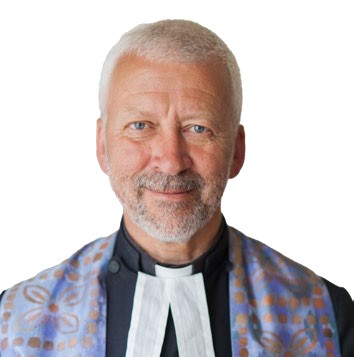Love and hope
The Rev Dr Richard Frazer considers how congregational life is more than numbers.

The Rev Dr Richard Frazer
SOON after I arrived as minister at Greyfriars Kirk in Edinburgh in 2003, I had an intriguing conversation with the Session Clerk, Alison Elliot. She told me that during the vacancy a delegation had come from Presbytery to ask questions about the life of the congregation.
This resulted in negative answers. Greyfriars had no uniformed organisations, a tiny Guild, a very small Sunday school, few weddings, not many young adults and so the list went on. Alison suggested that the questions made her feel that ours was a failing congregation and yet there was so much going on.
We felt that some of the questions were really quite out of date, an ideal of the Church of the past. We also realised that many of the questions also implied that there was a typical Church of Scotland congregation and we were not measuring up.
There is no typical Church of Scotland congregation. Each one is unique, with its own character, story and often with a distinctive role in its context. A city centre congregation is quite different from one in the suburbs or in a rural setting. Many congregations have a particular strength in some areas but, on paper, can look quite weak in others.
We run the risk of misleading and discouraging ourselves by imagining a standard model for a congregation when there is not one and rooting our questions in a world that has all but vanished. For good or ill, Scotland has outgrown ideas of a ‘Godly Commonwealth’ and emerged as a multi-cultural, pluralist community in the 21st century.
One of the most depressing tasks of ministry was preparing the Annual Statistical Return. The questions have not changed in all my time as a minister. The result was a picture of decline with statistics that showed we were failing and approaching oblivion.
Not long ago, I took part in a conference at Glasgow Presbytery. In the midst of so much change, the mood was quite gloomy and beleaguered. Then I asked a simple question. “Tell us about the work you are doing in your place not asked about in your Statistical Return”. The atmosphere changed and the room lit up. People had so much to say about what their congregations were doing and how the Spirit was alive and at work in their communities.
Wonderful things are happening across the country as congregations respond to the guiding of the Spirit in a changing culture. The stark evidence produced by our Statistical Returns can weigh heavily on us, so maybe we should take the radical step of abandoning the practice all together.
The questions we ask may tell us about faith; how many people attend church, how many are baptised, confirmed or married. What about hope and love? Not so easy to measure. “And now faith, hope, and love abide, these three; and the greatest of these is love,” writes St Paul.
“
There is no typical Church of Scotland congregation. Each one is unique, with its own character, story and often with a distinctive role in its context.
It is hard in a Statistical Return to acknowledge and celebrate the ways in which people of faith adapt to cultural change, underwrite hope and build communities of love guided by the Spirit. The world we inhabit is unrecognisable from a few generations ago and many congregations are adapting and often thriving but not measured or acknowledged accurately.
Is it not the case as we read in the stories of the early church that people begin to explore faith when they see it put into action by those who nurture hope in the face of despair and spread love as an antidote to isolation and fear? Faith grows out of communities of love and hope. Maybe our Statistical Returns have it the wrong way round by measuring evidence of faith before hope and ‘the greatest of these’, which is love. ¤